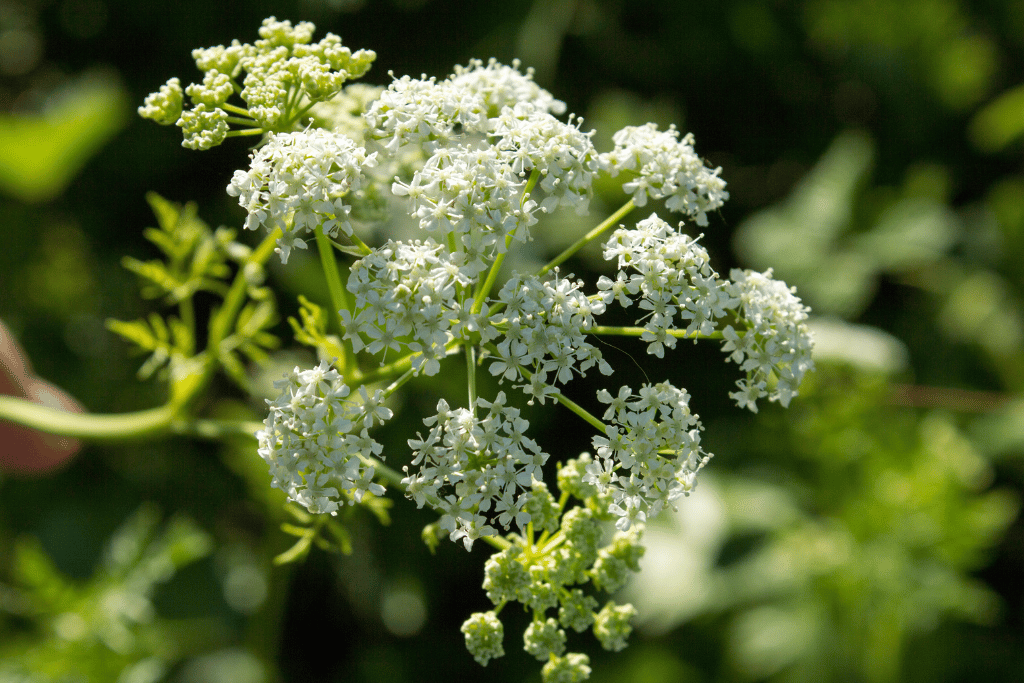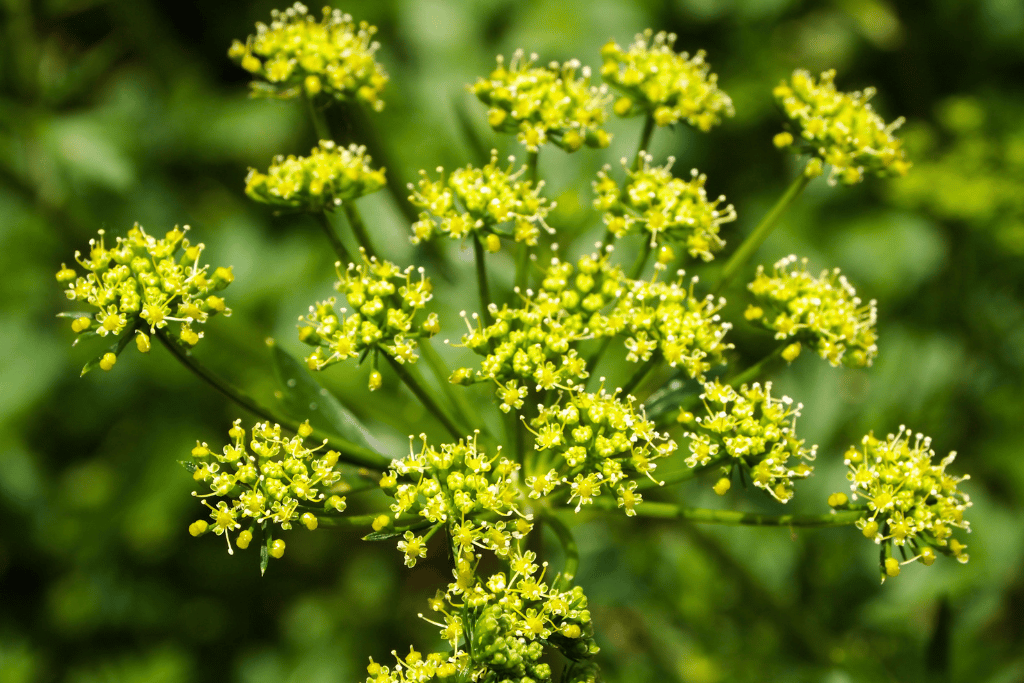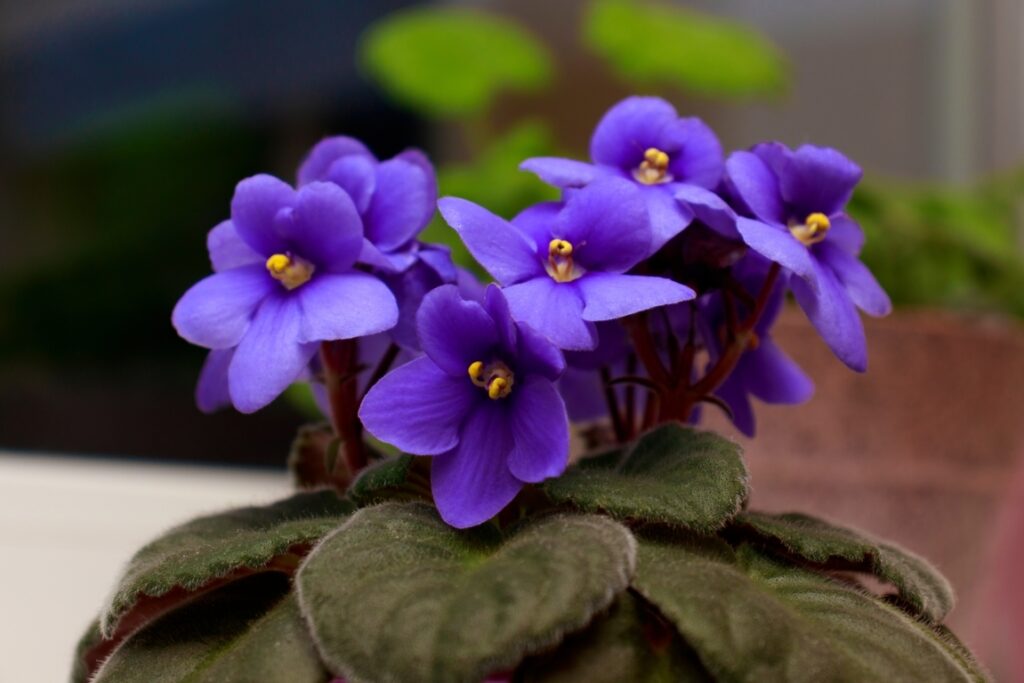
As a gardening expert with years of knowledge and experience in the field, I’ve a knack in recognizing common threats that can be found among various plant species. Especially, when it comes to identifying poison hemlock lookalikes!
I recall when I was naive and unable to distinguish between the lookalikes of Poison hemlock. Foolishly, I mistakenly pulled out wild carrots thinking they were poison hemlock. It’s understandable; after all, Hemlock is a notorious killer filled with poison! But now that my wisdom has grown over time, let me guide you in avoiding this mistake!
Recognizing between beneficial plants and toxic lookalikes can be tricky for anyone, even my neighbor recently had a near miss when mistaking wild parsnips with poison hemlock. But thankfully I was available to confirm the plant’s identity before any harm was done!
My guide is here to help you identify between plants that look like poison hemlock. With this extensive resource at your fingertips, you will be able to shield yourself from potential danger when it comes time to pull out wild carrots! After reading my informative guide, I’m sure there won’t be any more mix-ups!
Poison Hemlock – An Overview

Before anything else, it’s important to note that poison hemlock is more than just a plant with an unassuming name. It has earned the title of “devil’s porridge” and “spotted hemlock”, thanks to its devilish appearance; the stem bears signature purple spots that are sure to catch anyone’s eye.
But you may be wondering, where did this nefarious weed come from? Its origin lies in Europe and Asia before it spread to other parts of the world including North America. Be wary when cultivating a garden – don’t let poison hemlock take root!
So, why is it so hazardous? Well, it contains a toxin called coniine which can have devastating effects on your nervous system. Even consuming a few pieces of poison hemlock could cause trembling, paralysis, or even death. This is exactly why you should never come into contact with this plant!
But, one of the most interesting aspects about this powerful plant is its use in medicine. Going back to ancient Greek and Roman times, people believed that it had pain relieving and sedative effects – even using it as a poison for executions! It’s unbelievable how such a versatile herb can be both terrifyingly lethal yet therapeutically beneficial at the same time.
Make sure to be vigilant when it comes to poison hemlock. This toxic plant can appear in the most unsuspecting of areas.
How to Identify Plants That Look Like Poison Hemlock
With its white, umbrella-like flowers, poison hemlock is a dangerous and common presence in North America and Europe. To prevent accidental ingestion of this highly toxic plant, it is essential to be able to correctly identify it amongst other similar-looking plants. After all, the effects of consuming such toxins can prove fatal!
1. Yarrow (Achillea millefolium)

Yarrow, a flowering herb boasting an array of medicinal properties, is often misidentified as poison hemlock. Though the white flower clusters and fern-like leaves may be similar in structure to its toxic counterpart, yarrow possesses narrower leaves and features a hairy stem– opposed to poison hemlock which has a smooth stem. This fragrant flora can help soothe digestive issues, skin problems, among other ailments.
Appearance: Can reach up to 3 feet, it boasts a white flower cluster atop its hairy stem. Its delicate leaves are shaped like feathers that sway gracefully with the wind.
Origin: Yarrow is indigenous to Europe and Asia, but its growth has expanded to North America and other parts of the globe.
Why people mistake it for poison hemlock: Yarrow leaves are superficially similar to poison hemlock, however they boast a distinctive slender shape and hairy stem.
2. Wild fennel (Foeniculum vulgare)

Wild fennel isn’t just a beautiful flower; it’s also an incredibly versatile herb. With its unique licorice-like flavor, wild fennel can be found in many Mediterranean dishes – but there is one thing you should know before foraging: don’t confuse it with poison hemlock!
If you take the time to closely inspect the leaves and stems of both herbs, you’ll notice that while they have some similarities (such as their feathery leaves), wild fennel has grooved stems which sets them apart from poisonous hemlock whose stem remains smooth.
Appearance: The striking yellow flowers, feathery leaves, and bluish-tinted grooved stem of this plant can reach up to 6 feet tall.
Origin: Wild fennel, originating in the Mediterranean region, has spread to encompass North America and many other places around the globe.
Why people mistake it for poison hemlock: Wild fennel has leaves and flowers that resemble the deadly poison hemlock, however its own foliage is much more feathery in texture and the stem of this herb is deeply grooved.
3. Elderflower (Sambucus nigra)

Elderflower, an exquisite shrub or small tree whose white flowers are used to make tea, wine, and other drinks alike, is often confused with the poisonous hemlock due to its similar-looking flowers. Yet elderflower looks a bit different thanks to the bushier shape and leaves that have more sharply serrated edges than those of poison hemlock.
Appearance: Standing tall at up to 13 feet in height, Elderflower is a sight for sore eyes with its clusters of dazzling white flowers and jagged foliage. Its grayish-brown stem has a woody texture, adding an extra element of beauty.
Origin: Elderflower is native to Europe and North America.
Why people mistake it for poison hemlock: With its strikingly toothed leaves and woody stem, water hemlock is similar in appearance to poison hemlock but can easily be distinguished.
4. Wild carrot (Daucus carota)

Wild carrot, more commonly known as Queen Anne’s Lace, flourishes along roadsides and fields. Its white lacy flowers and leaves may appear similar to those of poison hemlock; however, the wild carrots have a hairy texture on its leaves that sets it apart from its dangerous counterpart. The shape of each leaf is also distinct enough to differentiate between the two plants.
Appearance: Endowed with stunning white, lacy flowers and delicate fern-like leaves, wild carrot can reach a height of 4 feet when fully mature. Its stem reflects an attractive purplish hue along with the velvety texture bestowed by its copious hairiness.
Origin: Wild carrot is native to Europe.
Why people mistake it for poison hemlock: Its delicate white and lace-like flowers are reminiscent of poison hemlock, yet its leaves feature a distinguishing hairy texture and curvature.
5. Wild parsnip (Pastinaca sativa)

Wild parsnip is not as uncommon as one might assume; it’s frequently seen in gardens. Although at a glance, its yellow flowers and toothed leaves can be mistaken for the toxic poison hemlock plant, wild parsnip has an even more defined serrated appearance than what’s typically found on poison hemlock leaf edges.
Appearance: The wild parsnip can reach heights of up to 5 feet and is distinguished by its vibrant yellow flowers, along with serrated leaves. Its stem is characterized by a hairy texture and grooved pattern.
Origin: Native to Europe and Asia.
Why people mistake it for poison hemlock: Wild parsnip has similar shaped flowers that can resemble those of poison hemlock, but its leaves are more deeply divided and have a serrated appearance.
6. Water hemlock (Cicuta spp.)

Water hemlock and poison hemlock are often confused due to their similar appearances, yet there is a distinct difference; water hemlock has more branches in its stem and smaller flowers. Regrettably, this plant is one of the most poisonous plants native to North America—and should be avoided at all costs!
Appearance: Water hemlock is a tall plant that can grow between 3 to 7 feet in height and has delicate white flowers, with pointed-tipped leaves which are divided into multiple sections. The stem of this flora is branched too.
Origin: Water hemlock is native to North America.
Why people mistake it for poison hemlock: Water hemlock and poison hemlock are quite alike, both having delicate white blossoms and divided leaves. However, the stem of the water hemlock is more intricately branched than that of the hemlock.
Although these species may look alike, there are clear characteristics that can assist in identifying them separately. Understanding this will not only prevent confusion but also protect you and your family from potential harm.
So, apart from Water hemlock, all other lookalikes are non poisonous plants that look like poison hemlock. Therefore, by being conscious of these distinctions and exercising caution when handling any unfamiliar plants, you can guarantee your well-being while enjoying the marvels of nature.
What to do if There’s Poison Hemlock Growing in Your Garden?
Don’t let suspicion of poison hemlock loom over your garden; apply these useful tips to guarantee safety for yourself and others!
Poison hemlock identification: While the plant may appear similar to other plants, pay attention to its delicate white flowers clustered together, finely divided leaves and that tall hollow stem with purple spots. These are tell-tale signs of this particular species!
Don’t let poison hemlock get under your skin: Wear gloves, fully covered clothes to protect yourself from this dangerous plant.
Time to give poison hemlock the boot: Uproot it with caution, and be extra attentive – even a small mistake can be incredibly dangerous.
Don’t let this toxic plant go nuclear – dispose carefully: To ensure the safety of your soil and avoid any contamination, do NOT compost or combust poison hemlock. Instead, securely bundle it up before disposing of the garbage for disposal.
Monitor the area: Stay vigilant for any potential new poison hemlock plants that may be growing. If you do come across any, have no fear of going back and taking action once more.
Educate others: Help protect your family and friends by spreading the word about this poisonous plant. Make sure they know how to recognize and remove poison hemlock from their properties!
Take heed: poison hemlock is no laughing matter. If you’re not sure how to safely remove it from your garden, call in a professional. Be bold and safe while tending to your garden – enjoy yourself and prosper!
Conclusion
It is important to be aware of plants that look like poison hemlock and identify them correctly in order to avoid potential danger. While these plants may have a similar appearance, there are key differences that separate them from the poisonous plant. With the above guide, you can enjoy nature with peace of mind and safety for yourself and others.




Pingback: Weeds That Look Like Geranium Leaves - Back Gardener